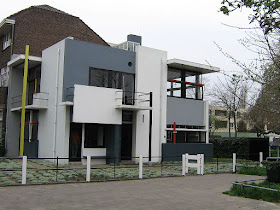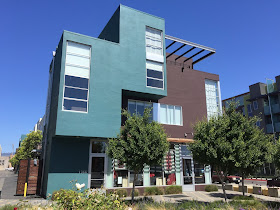From the Los Angeles Times:
Developers
can be required to include affordable housing, California high court rules
By
MAURA DOLAN June 15th, 2015
The
California Supreme Court decided unanimously Monday that cities and counties
may require developers to provide below-market-rate housing as a condition of a
building permit.
The
decision is expected to make it easier for Los Angeles and other cities with
housing shortages to force developers to build or pay for affordable housing.
“There
is no reason why a municipality may not ... [require] new developments to set
aside a percentage of its proposed units for sale at a price that is affordable
to moderate or low income households,” Chief Justice Tani Cantil-Sakauye wrote
for the court.
California
has a housing shortage, with demand exceeding supply. To ensure cities and
counties remain affordable, scores of local governments have passed ordinances
requiring developers to provide below-market-rate residences.
Monday's
decision stemmed from a constitutional challenge of an affordable housing
ordinance passed in San Jose five years ago.
The
state building industry, backed by real estate groups, sued and blocked the
city from enforcing the law. Developers contended it was unconstitutional
“taking” of private property.
The
law requires developers building 20 or more housing units to offer 15% at below-market rates or pay into a
city fund.
Nearly
200 cities and counties have passed some version of the law.
In
a concurring opinion, Justice Ming W. Chin observed that the San Jose ordinance
permitted developers to build the affordable units more cheaply than the
market-rate housing. An ordinance that required developers to offer housing at
below-cost rates might fare differently, Chin wrote.
“Providing
affordable housing is a strong, perhaps even compelling, governmental interest.
But it is an interest of the government,” Chin wrote. “The community as a whole
should bear the burden of furthering this interest, not merely some segment of
the community.”
Andrew
L. Faber, who represented San Jose before the court, said the ruling would
encourage more cities and counties to require developers to build affordable
housing.
He
said the California Building Industry Assn. has been aggressively challenging
such ordinances, and “this
decision is quite a rebuff to their arguments.”
“It
is very important because no one disputes that there is a huge affordable
housing crisis in California,” Faber said. “Housing prices have gone up, and
incomes haven’t risen to meet them.”
Thomas
B. Brown, who represented California’s cities and counties, called the ruling
“a ringing recognition” that local governments have the right to pass such
laws.
The
decision “recognizes that these kinds of laws are really land use laws,” Brown
said.
But
Tony Francois, who represented the building industry in the case, called the decision “very
disappointing.”
“The
ruling allows government to impose financial penalties on providers of new
housing – a penalty that can only deter efforts to ease the state’s housing
shortage, and make it even harder and costlier for average families to afford a
home in California,” said Francois, a senior staff attorney with the Pacific
Legal Foundation, a conservative, property-rights group that represented the
industry free of charge.
“Even
more broadly,” he added, “ the decision exposes every homeowner and property
owner in California to limitless potential fees and other property demands any
time they ask for a permit of any kind, because the local government is allowed
to use the permit process to raise money for any purpose whatsoever, whether it
relates to the property owner or not.”
He said the building industry was considering its options, which
could include an appeal to the U.S. Supreme Court.

























